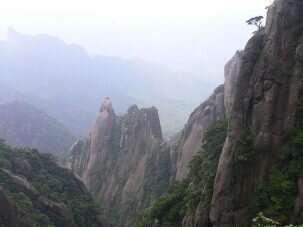Credit: 江上清风 via Wikimedia Commons
Researchers at Columbia's Lamont-Doherty Earth Observatory and Nanjing University have developed a more accurate way to study the global carbon cycle—specifically, one of the most important ways CO2 is removed from the atmosphere. The study, published today in Proceedings of the National Academy of Sciences, reports on a substantial advance in understanding the process by which minerals called silicates break down, or weather.
Silicates are some of the most abundant minerals on Earth—they are the primary raw material of Earth's crust and, have an important role to play when it comes to global climate. Silicate weathering removes CO2 from the atmosphere over millions of years. For scientists who study paleoclimatology—the ancient history of Earth's climate—determining how, when, and how fast silicates have weathered through time is an important key to understanding geological history and natural processes that remove CO2 from air.
For decades, scientists have been trying to understand the past history of silicate weathering. However, the methods scientists have traditionally used to trace silicate weathering were either prone to interference from other sources or suggested dual interpretations. Recently, technical advances have made it possible to explore potassium isotopes as a weathering proxy. In this new study, led by graduate student Shilei Li, researchers have discovered that the ratio of different potassium isotopes in river water is primarily driven by changes in the silicate weathering process, making it a more reliable and valuable tracer than previous ones. In the future, scientists could analyze potassium isotope ratios in ancient sediments to identify the intensity of this weathering over time.
Shilei Li, who is from Nanjing University and now working at Lamont, explains that reconstructing the history of silicate weathering is very important to understanding the interplay between climate, weathering, and mountain-building. By developing the potassium isotope tracer, he and colleagues have given researchers a powerful new tool.
"Consider the ocean sediment as a book, a record of Earth geologic history, and we want to know the answer to one question, but we don't know which chapter to read. Now we know," explained Li. "We know the potassium isotope is the basic chapter we want to read in the book, if we want to understand how the carbon cycle and climate works on long timescales."
More information: K isotopes as a tracer for continental weathering and geological K cycling. PNAS, doi.org/10.1073/pnas.1811282116
Journal information: Proceedings of the National Academy of Sciences
Provided by Earth Institute, Columbia University
This story is republished courtesy of Earth Institute, Columbia University http://blogs.ei.columbia.edu.























